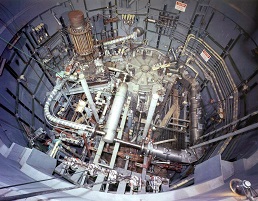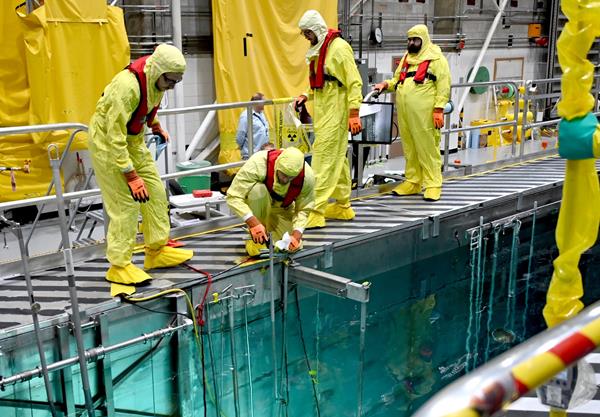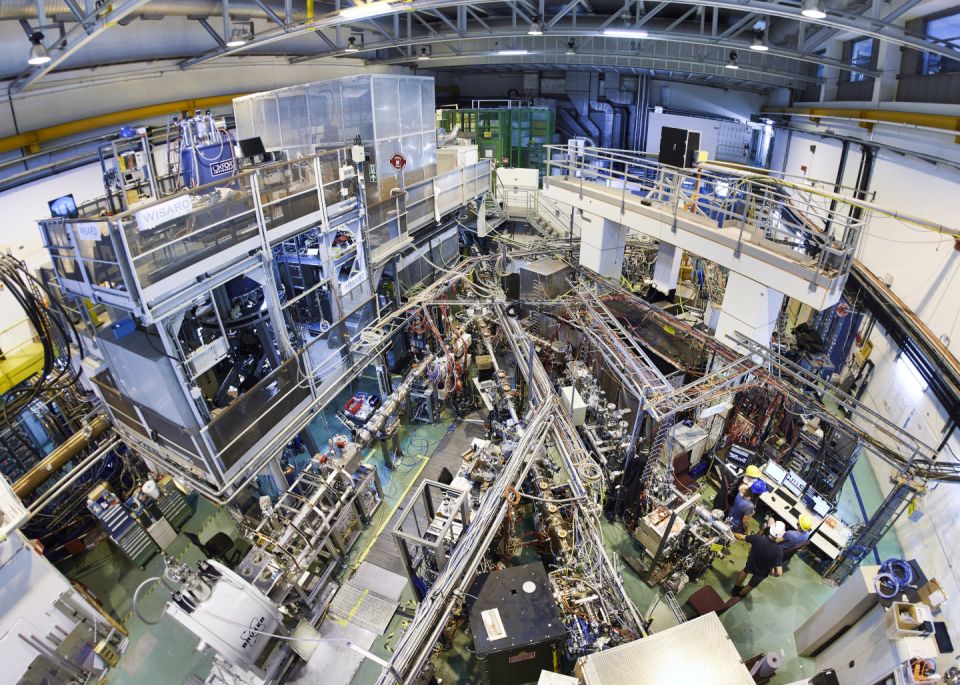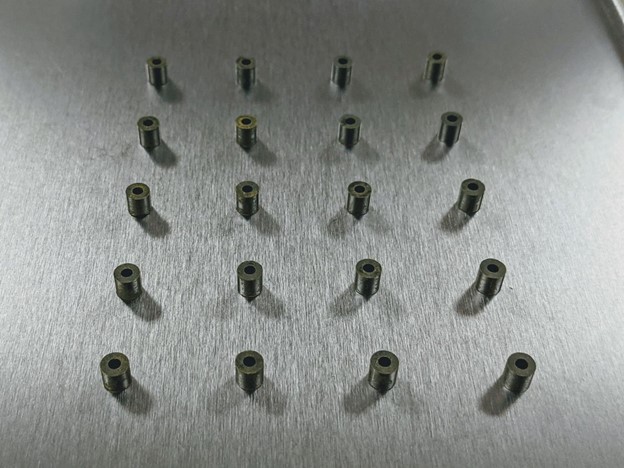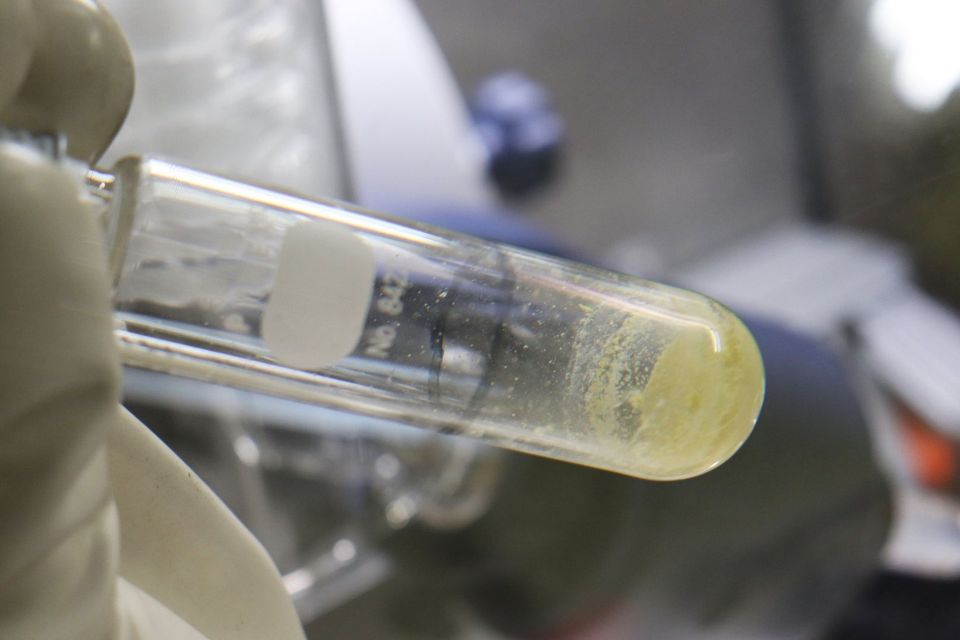Nuclear Energy Development and Slowing Climate Change
We don't really know how much trouble we are in with global warming, but if it continues, experts tell us to expect flooding in coastal areas, intense storms, droughts, regional food and water shortages, mass migrations, and social upheaval. There is probably a tipping point, the point at which anthropogenic global warming becomes irreversible, so there is an urgency to developing safe, clean, cheap energy. Scientists and engineers are in a race to find a solution.
Currently in the United States we are seeing the replacement of coal with natural gas, thanks to advancements in drilling technology and hydraulic fracturing. Although burning natural gas emits half the CO2 that coal does, these emissions are still substantial and harmful. Natural gas will serve as a necessary intermediate step until something better comes along.
Wind and solar
Wind and solar power might be a suitable alternative for energy in some places, but solar and wind will always be a small part of global energy production due to their high cost, coupled with low and intermittent energy output. A big windmill generates about five megawatts, when the wind is blowing. A single coal, gas, or nuclear plant generates over 1,000 megawatts-nonstop. Large solar installations generate from 50 to 100 megawatts when the sun is shining.
Both wind and solar require fossil fuel plants to generate electricity at night or when the wind isn't blowing. Germany, for example, is building new coal-burning plants for this purpose. Also, many locations simply don't have enough wind or sunshine for wind or solar to be practical. The large land mass required by wind and solar, and the required delivery grid, is often met with resistance from local residents who don't want industrial installations on their landscapes. Wind and solar are more expensive than coal or gas. Currently wind and solar are heavily subsidized by governments.
Nuclear safety
Nuclear power has the greatest potential to be the energy source of choice, but it has to overcome public and political resistance. Nuclear power has proven itself to be thousands of times safer than fossil fuels, just as commercial air travel is thousands of times safer than travel by automobile. We hear sensational stories about airplane crashes and nuclear accidents-while tens of thousands of deaths from respiratory diseases caused by burning coal are ignored. Nuclear power has by far the lowest accident rate among coal, oil, or natural gas.
Chernobyl
The only nation to suffer fatalities from a nuclear accident is Russia. Russian authorities report 31 fatalities from its 1986 Chernobyl accident. UNSCEAR (United Nations Scientific Committee on the Effects of Atomic Radiation) says that apart from increased thyroid cancers*, "there is no evidence of a major public health impact attributable to radiation exposure 20 years after the accident." It should be noted that the Chernobyl plant was built without a containment dome and was operated in a reckless manner. No Chernobyl type plants are in operation today. The Chernobyl plant was designed for making weapons, not electricity. (See Chernobyl disaster effects.)
Fukushima
In the case of Fukushima, the explosions and radiation did not, and probably will not, cause any deaths. The radiation levels most people experienced were 20 millisieverts or less. Cancers are not expected with exposures less than 100 millisieverts. The World Health Organization's report on Fukushima health risks says "for the general population inside and outside of Japan, the predicted risks are low and no observable increases in cancer rates above baseline rates are anticipated." The greatest downside of the Fukushima accident is the overreaction of nations that have backed away from nuclear power and will increase the burning of fossil fuels to generate power.
Three Mile Island
Probably the most damaging overreaction to a nuclear accident was Three Mile Island; no fatalities, no injuries, no radiation exposure, yet the United States stopped building nuclear reactors for 30 years and built fossil fuel plants that added millions of tons of CO2 to the atmosphere.
Nuclear development
For political reasons, the U.S. funding for nuclear power research has been shrinking steadily. This is due to two factors: fear of nuclear power, and a choice made during the Nixon administration. The original development of nuclear fission technology was to enable building bombs, then powering submarines. Using nuclear power to generate electricity came afterword. The design of nuclear power plants of those early days was the light-water reactor (LWR). This design has undergone significant improvements, but in the 1950s and '60s, scientists at Oak Ridge National Laboratory (ORNL) came up with another reactor design. The new design made meltdown impossible, and the waste was 1,000 times less than the LWR. In fact, this new design could use the waste of the old design as fuel. The new design didn't need large amounts of water the way the LWR does, and could desalinate water while generating electricity. The new design didn't even need uranium for fuel. A prototype was built, and ran for five years to prove the design would work.
When the Air Force came to ORNL scientists back in the late '50s and asked them to develop a nuclear power plant for a bomber, the scientists were forced to create a reactor that was light, small, and safe. It would have to be one that would eliminate some issues of the LWR. The new design they came up with was the molten salt reactor (MSR). The scientists built a small proof-of-concept reactor for the Air Force, but then funding was cut as long-range bombers were replaced with ICBMs. In the 1960s, ORNL received funding for the Molten Salt Reactor Experiment (MSRE). The scientists argued for continuing development of the molten salt reactor but the military and bureaucratic momentum were behind the LWR.
The MSRE was highly successful and ran continuously from 1965 to 1969. A decision was made during the Nixon administration to stop funding for the MSRE in favor of development of a breeder reactor, at a time when it was thought there was a shortage of uranium needed by LWR reactors. The breeder reactor ran from 1964 to 1994 when it was defunded. The breeder reactor design evolved to the Integral Breeder Reactor, which is still being worked on today. However, the molten salt reactor work was forgotten. For 30 years, students could get PhDs in nuclear engineering without hearing anything about molten salt reactors.
Enter the 21st century and a young NASA scientist who was given the job of finding a way to power a colony on the moon. His name is Kirk Sorensen. He knew this power source would likely have to be nuclear-given that the moon has no wind and two weeks of darkness every month-but the prevailing LWR designs all called for water, lots of water. One day while visiting a colleague's office, he noticed a book titled Molten Salt Reactors and asked to borrow it. He took it home and became consumed in its 1,000 pages of technical jargon and data. Sorensen was so enthralled with the design that he started a grassroots movement that today has scientists and engineers working on their own time to refine and develop the design. Their design is called the Liquid Fuel Thorium Reactor (LFTR), a type of molten salt reactor that burns thorium, a plentiful and cheap fuel.
The Generation 4 reactor design race
The race is now on to see who can produce the first commercial-grade Gen 4 reactor and get international patents for it. The lead has been taken by China. There are over 100 companies in China working on designs for nuclear reactors, including the LFTR design. In fact, the LFTR design in China is receiving 100 percent Chinese government backing, and the U.S. Department of Energy (DOE) is cooperating with China by giving them all the research that was done at ORNL. The DOE describes this as collaboration. China stated clearly that it intends to be sole owner of any international patents on LFTR designs. At the time of this writing, there is no DOE funding for the development of LFTRs in the United States. Since Sorensen's grassroots movement was initiated, many countries have begun R&D on molten salt reactors because the design is so promising and simple compared to other designs.
Meanwhile, Sorensen and a partner have started a private company called Flibe Energy to develop LFTRs. Ironically, the U.S. Army is backing Sorensen's efforts. Sorensen expects to have a LFTR power up in 2015. He chose a partner in his company who is a lawyer and expert in international patents. He apparently sees the importance of getting those international patents before China does.
There are other nuclear designs in the works. Bill Gates is backing a nuclear reactor design called a Traveling Wave Reactor, a type of Integral Fast Reactor, that is being developed by Terrapower. Another company worth noting is Trans Atomic Power, started by two MIT PhD students. Their design is a molten salt reactor they call the Waste Annihilating Molten Salt Reactor that would burn the nuclear waste produced by today's LWRs. They claim that their idea is new, but all LFTR fans know that molten salt reactors can burn nuclear waste. Nothing new about that, but good luck to them.
The prize
Robert Hargraves' excellent book Thorium: Energy Cheaper than Coal points out that LFTRs could be built in factories and turned out at a rate comparable to Boeing's production of airliners. LFTRs could be used to power ocean-going ships, currently a major source of CO2 , and could provide electric power for high-speed rail to replace many commercial jet flights. The heat from LFTRs could be used to synthesize hydrogen-based fuels for automobiles, desalinate sea water in coastal areas, and bring energy to impoverished nations. Hargraves makes a convincing case for the success of LFTR technology and its likely success in a capitalist economy. The only real question is whether the United States will be a leader, or a follower, in LFTR technology.
This is an important race worth watching. The winner is likely to win big-we will all win big. However, will the United States be buying reactors from China? In any case, clean energy is coming. I would just like to see Sorensen win the race. He deserves it. Without him, the Chinese wouldn't even know about molten salt reactors.
Moreover, this is too important to be left solely to a small underfunded company. The DOE national labs need to be more involved. Currently the national labs are contributing in some important ways, namely research on materials that work best to contain molten salt for solar power plants. Their research will most likely be available to the private companies working on LFTRs, but the national labs should do more because they have the authority to build and test LFTRs without the interference from the U.S. Nuclear Regulatory Commission.
Gen II and Gen III reactors are winners, but politics made us all losers
While I am an advocate of the development of fourth generation nuclear power, it must be said that the political movement that has virtually stopped the building of all nuclear power reactors for the past 30 years is a disaster. Instead of using clean and safe nuclear power, we've been building fossil fuel power plants and spewing millions of tons of CO2 and particulates into the air that have set us on a potential disaster course with global warming. That now appears to be changing. "Here in the United States, five new nuclear plants are expected to be operational by the end of the decade while internationally, 70 such facilities are planned," reports Ken Silverstein in Forbes Magazine. Power Engineering Magazine reports Big Plans for Mini Reactors in a February 2013 article.
Although Generation IV reactors should decrease worry about proliferation and disposal of nuclear waste, worrying about today's operating reactors is an unfortunate overreaction.
Proliferation risk
Current LWR reactors designed to generate electricity are not suitable for bomb building. If a nation wants to build a uranium bomb, enriching uranium to a high enough level is much more difficult than enriching for a reactor. If a nation wants to build a plutonium bomb, the best way to do it is to build a different type of reactor for that purpose. In other words, it is simply not true that if a nation builds a nuclear power plant, it could easily build a bomb.** Nations make thoughtful decisions of what to build. Most nations with nuclear power plants do not pursue nuclear weapons capability; indeed there are nations with nuclear bombs and no nuclear power plants.
Nuclear waste
Nuclear waste is not a technical problem, it is a political problem. The United States could recycle its waste, but it makes more sense to store it for use as fuel in fourth generation reactors. The proposed Yucca Mountain repository in Nevada is an example of a technical solution being blocked by political problems. Current on-site storage will suffice until the next generation of reactors come online. The next generation of reactors will burn nuclear waste from the old reactors.
This article was originally posted at The Energy Collective
______________________

Nolan
Jerry Nolan is a grassroots supporter of solutions to global warming.
Footnotes:
* Thyroid cancers are easily detected and treated. "One common theme in all of these accidents is that in general, health consequences are not global and unless you are up close and personal with the reactor core, health effects are not noticeable in any measurable way. The thyroid cancers from Chernobyl are the only exception to this and did produce some measurable offsite consequences. These particular cancers can be attributed to gross negligence in the emergency response efforts from the Soviet government, as they were focused only on the reactor and, sadly, these were preventable. All the Soviet government had to do was to evacuate and/or distribute iodine pills to the public and so block uptake of the radioactive iodine released from the accident." Does the Evidence Show that There Are No Nuclear Disasters?
** Uranium processed for electricity generation is not useable for weapons. The uranium used in power reactor fuel for electricity generation is typically enriched to about 3-4 percent of the isotope U-235, compared with weapons-grade which is over 90 percent U-235. For safeguards purposes uranium is deemed to be "highly enriched" when it reaches 20 percent U-235. Few countries possess the technological knowledge or the facilities to produce weapons-grade uranium.
Plutonium is produced in the reactor core from a proportion of the uranium fuel. Plutonium contained in spent fuel elements is typically about 60-70 percent Pu-239, compared with weapons-grade plutonium, which is more than 93 percent Pu-239. Weapons-grade plutonium is not produced in commercial power reactors but in a "production" reactor operated with frequent fuel changes to produce low-burnup material with a high proportion of Pu-239.
The only use for "reactor grade" plutonium is as a nuclear fuel, after it is separated from the high-level wastes by reprocessing. It is not and has never been used for weapons, due to the relatively high rate of spontaneous fission and radiation from the heavier isotopes such as Pu-240 making any such attempted use fraught with great uncertainties. Safeguards to Prevent Nuclear Proliferation
_____________________________
Articles:
If You Care About the Environment, You Should Support Nuclear Power
A good, politically charged documentary often seizes on what the audience already believes and throws fuel on the fire (e.g., the work of Michael Moore). A better documentary tries to convince its audience that what it takes for granted is flat-out wrong.
America's Nuclear Energy Future
Others think MSRs have promise, like Per Peterson at UC-Berkeley. He's going to China to test a 2-megawatt version of the MSR.
Nuclear energy: Radical reactors
MSRs would be impervious to catastrophic meltdown.
India: A hotbed of molten salt
The world is full of surprises isn't it? Well, I've just experienced quite a big one. I've just returned from the most amazing meeting of the minds in Mumbai-the Conference on Molten Salts in Nuclear Technology hosted at the Bhabha Atomic Research Centre.
A Worldwide Energy Solution America Can Supply
Ever wonder where our energy comes from? Read on to learn about the energy solution from Liquid Fluoride Thorium Reactors.
China Takes Lead in Race for Clean Nuclear Power
China has officially announced it will launch a program to develop a thorium-fueled MSR, taking a crucial step toward shifting to nuclear power as a primary energy source.
Presentations
Robert Hargraves - Thorium: Energy Cheaper Than Coal
The Liquid Fluoride Thorium Reactor: What Fusion Wanted to Be
Energy From Thorium: A Nuclear Waste Burning Liquid Salt Thorium Reactor
Kirk Sorensen - Introduction to Flibe Energy @ TEAC3
The Thorium Molten Salt Reactor: Why didn't this happen (and why is now the right time?)
Thorium: Energy Cheaper Than Coal
Robert Hargraves
SuperFuel: Thorium, the Green Energy Source for the Future
Richard Martin
Stewart Brand


